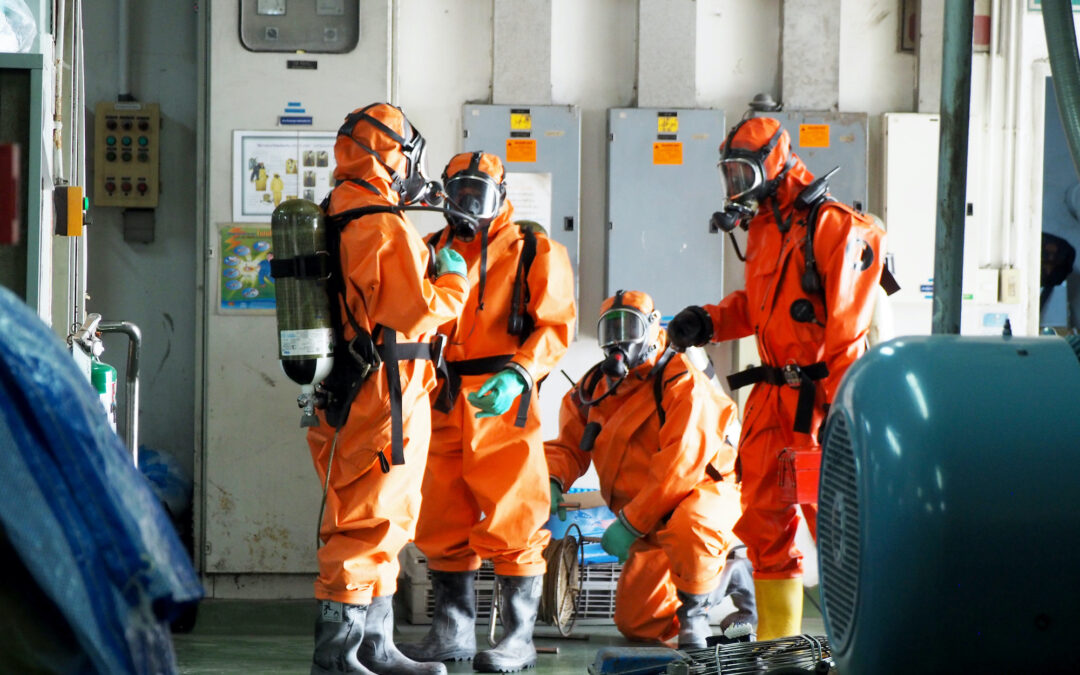Occupational exposures to chemicals and other hazardous environments have been recognized as having potential affects to the health of workers; workers who conduct operations with atmospheric concentration of any toxic, corrosive or asphyxiants substance that poses an immediate threat to life, irreversible adverse health effects, or a hazardous situation that would interfere with an individual’s ability to escape unassisted from a permit space is considered to being “immediately dangerous to life or health” (IDLH).
Discussion Points:
• What is IDLH?
• What are IDLH conditions?
• What is important about the value of IDLH?
• What PPE should be worn in an IDLH situation?
Discussion:
Short-term exposures to high concentrations of some airborne chemicals can result in ailments, including irritation of the eyes and respiratory tract, temporary pain, disorientation, nausea, and death from dangerous circumstances.
The immediately dangerous to life or health air concentration values known as IDLH values were developed by the National Institute for Occupational Safety and Health or NIOSH in the 1970s. IDLH values were established to ensure that a worker can escape from a given contaminated environment in the event of failure of respiratory protection equipment and to indicate a maximum level above which only a highly reliable breathing apparatus, providing maximum worker protection, is permitted.
Where respiratory protection is required, it may be designated as nonemergency or emergency. Nonemergency situations involve exposure to atmospheres that are not immediately dangerous to life or health but will produce discomfort, sickness, permanent harm, or death after prolonged exposure. Emergencies involve actual or potential exposure to atmospheres that are immediately harmful and dangerous to life or health after reasonably short exposures.
The Occupational Safety and Health Administration (OSHA) defines an immediately dangerous to life or health concentration in their Hazardous Waste Operations and Emergency Response regulation 29 CFR 1910.120. OSHA has several regulatory standards associated with hazardous conditions workers may encounter while performing their job tasks where hazards are present in the workplace. Where there is no specific regulatory standard, these circumstances are recognized under the General Duty Clause. Where IDLH conditions require respiratory protection, to comply with the OSHA standards, an employer should use the IDLH limits set by NIOSH in determining appropriate respiratory selection.
OSHA recommends the “buddy system” where employees are organized into workgroups, and each employee is observed by at least one other employee in the group; the purpose of the “buddy system” is to provide rapid assistance or first aid care in the event of an emergency.
As always, be safe out there!


Recent Comments